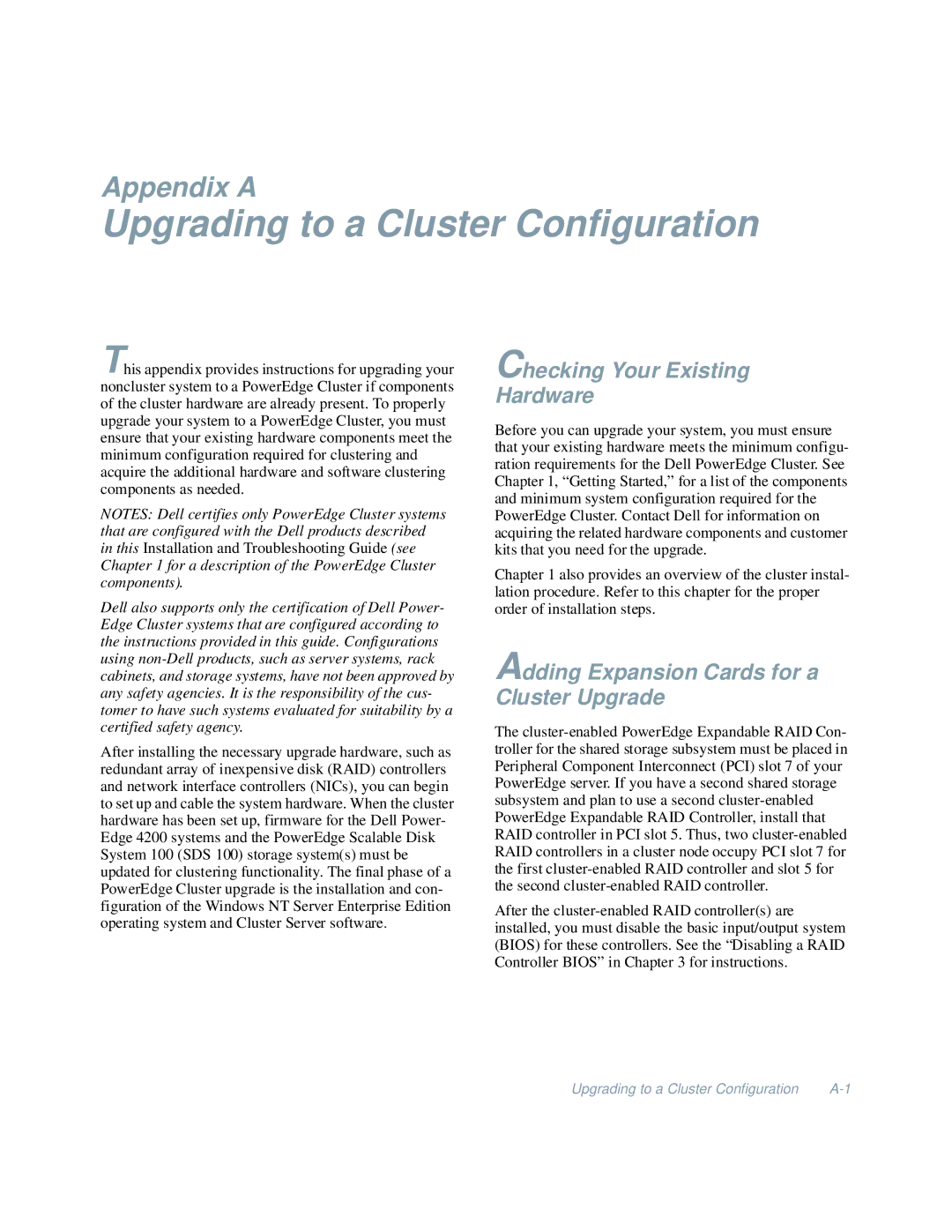Appendix A
Upgrading to a Cluster Configuration
This appendix provides instructions for upgrading your noncluster system to a PowerEdge Cluster if components of the cluster hardware are already present. To properly upgrade your system to a PowerEdge Cluster, you must ensure that your existing hardware components meet the minimum configuration required for clustering and acquire the additional hardware and software clustering components as needed.
NOTES: Dell certifies only PowerEdge Cluster systems that are configured with the Dell products described in this Installation and Troubleshooting Guide (see Chapter 1 for a description of the PowerEdge Cluster components).
Dell also supports only the certification of Dell Power- Edge Cluster systems that are configured according to the instructions provided in this guide. Configurations using
After installing the necessary upgrade hardware, such as redundant array of inexpensive disk (RAID) controllers and network interface controllers (NICs), you can begin to set up and cable the system hardware. When the cluster hardware has been set up, firmware for the Dell Power- Edge 4200 systems and the PowerEdge Scalable Disk System 100 (SDS 100) storage system(s) must be updated for clustering functionality. The final phase of a PowerEdge Cluster upgrade is the installation and con- figuration of the Windows NT Server Enterprise Edition operating system and Cluster Server software.
Checking Your Existing
Hardware
Before you can upgrade your system, you must ensure that your existing hardware meets the minimum configu- ration requirements for the Dell PowerEdge Cluster. See Chapter 1, “Getting Started,” for a list of the components and minimum system configuration required for the PowerEdge Cluster. Contact Dell for information on acquiring the related hardware components and customer kits that you need for the upgrade.
Chapter 1 also provides an overview of the cluster instal- lation procedure. Refer to this chapter for the proper order of installation steps.
Adding Expansion Cards for a Cluster Upgrade
The
After the
Upgrading to a Cluster Configuration |
